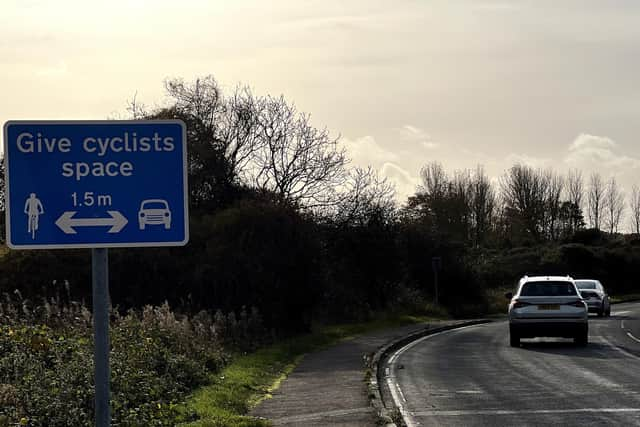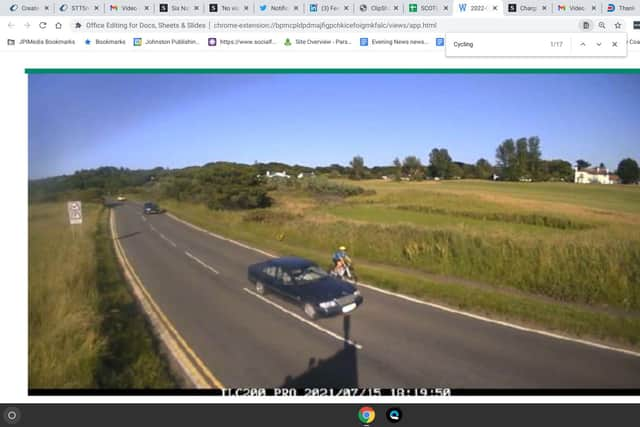Drivers passing dangerously close to cyclists nearly halved in East Lothian pilot project
and live on Freeview channel 276
The results follow changes to the Highway Code that include motorists being advised to leave at least 1.5m when overtaking riders at up to 30mph, and more at higher speeds.
The trial of the signs, which highlight the minimum distance, will now be extended to other locations before potentially being rolled out across Scotland.
Advertisement
Hide AdAdvertisement
Hide AdResults from the initial site at Links Road, near Longniddry, showed the number of dangerous “close passes” was reduced from 50 per cent to 29 per cent after the signs were installed last year.


The number fell from 434 of 856 overtakes to 56 of 196.
The number of close passes classed as extremely dangerous dropped from 1 per cent – six of 856 overtakes – to zero.
Cameras recorded the distance between overtaking vehicles and cyclists before and after the signs were erected.
They were also installed at Strathaven in South Lanarkshire, but an insufficient number of vehicles overtaking cyclists were recorded for their impact to be assessed.


Advertisement
Hide AdAdvertisement
Hide AdCycling Scotland, the official development body that led the project, said too many riders were intimidated by motorists passing too close.
Chief executive Keith Irving said: “The results of this initial road signage pilot project are really positive and we look forward to extending the pilot to several more roads to analyse the results and expand the evidence base on where signage can help road safety.
“With more people taking up cycling, especially in the last two years, it’s more crucial than ever that we improve safety on our roads
“Every week in Scotland, at least four people are seriously injured while cycling and too many people are intimidated by close-passing vehicles.
Advertisement
Hide AdAdvertisement
Hide Ad“For Scotland to achieve net zero emissions, we need more journeys by bike, so we have to tackle safety concerns that are the major barrier.”
Lee Craigie, Scotland’s active nation commissioner, who took part in the scheme, said: “It has always felt uncomfortable for me to extol the personal health and environmental benefits a person on a bicycle might achieve without also acknowledging many of our roads feel too dangerous to share with motor vehicles.
“While we await a network of safe, segregated cycling infrastructure across Scotland, there is a lot we can be busying ourselves with to help more people understand how their actions might cause their fellow road users to feel.
“The significant findings of this project suggests education on safe passing distances might help establish a more mutually-trusting and caring culture between road users.”
Advertisement
Hide AdAdvertisement
Hide AdDuncan Dollimore, head of campaigns at lobby group Cycling UK, said: “We know from the results of countless surveys the perception the roads aren’t safe enough puts many people off cycling, and being overtaken too close whilst cycling is particularly intimidating.
"But this pilot shows that when drivers are reminded of the need to leave more space, their driving behaviour can change."
Richard Gladman, head of driving and riding standards at motoring group IAM RoadSmart, said: “Cyclists don’t have a safety shell of metal, seat belts and airbags around them, so the onus has to be on the driver to look out for the most vulnerable on our roads.”
A message from the Editor:
Thank you for reading this article. We're more reliant on your support than ever as the shift in consumer habits brought about by coronavirus impacts our advertisers.
If you haven't already, please consider supporting our trusted, fact-checked journalism by taking out a digital subscription.
Comment Guidelines
National World encourages reader discussion on our stories. User feedback, insights and back-and-forth exchanges add a rich layer of context to reporting. Please review our Community Guidelines before commenting.
